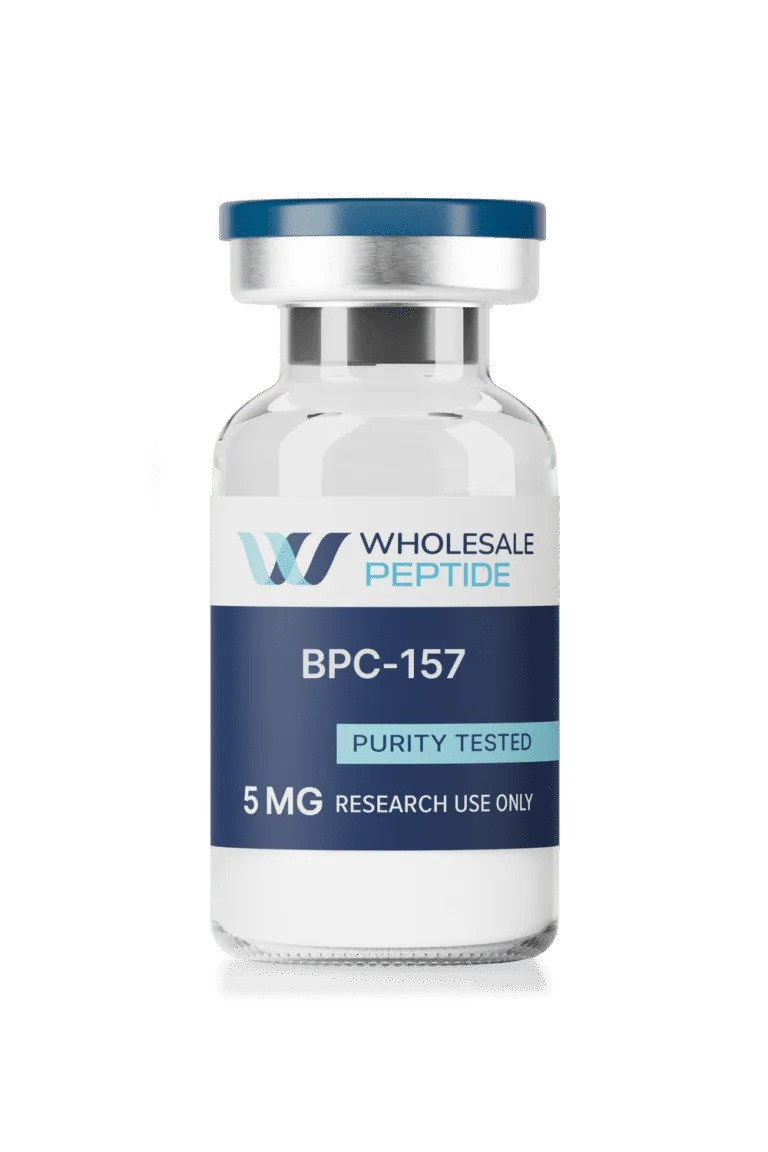By: Press Services
November 14, 2025
The Importance of Tirzepatide, Retatrutide, and Glutathione in Research
Tirzepatide, Retatrutide, and Glutathione: Key Research Findings
Brooksville, United States - November 14, 2025 / Wholesale Peptide /
Peptides are short sequences of amino acids that function as signaling molecules, impacting various biochemical pathways. Research into these compounds has concentrated on metabolic adjustment, tissue repair, and redox regulation. Prominent compounds in these domains include tirzepatide, retatrutide, and glutathione, along with other peptides examined for their structural or regenerative properties. A thorough understanding of their mechanisms, formulations, and research considerations is essential for well-controlled experimental studies.
Tirzepatide and Receptor AgonismTirzepatide operates as a dual receptor agonist, engaging glucose-dependent insulinotropic polypeptide (GIP) and glucagon-like peptide-1 (GLP-1) receptors. This dual action influences metabolic signaling by modulating pathways related to glucose management, lipid metabolism, and gastrointestinal movement. The molecule displays a higher affinity for GIP receptors and shows biased signaling at GLP-1 receptors, leading to distinct metabolic and gastrointestinal outcomes.
Two FDA-approved medications contain tirzepatide: Mounjaro, which is indicated for type 2 diabetes research, and Zepbound, which is indicated for metabolic regulation and body-weight research. Both medications utilize subcutaneous pen administration. The primary differences between these products lie in their labeled research indications rather than their molecular mechanisms, offering various frameworks for experimental exploration.
Retatrutide and Multireceptor ModulationRetatrutide is a triple-receptor peptide that targets GIP, GLP-1, and glucagon receptors. Its design aims to broaden the scope of metabolic signaling modulation. Phase II studies have demonstrated significant reductions in weight metrics under controlled research settings, with mean reductions surpassing those seen with dual-agonist peptides. Research interest is directed toward understanding how receptor distribution affects lipid metabolism, energy balance, and hepatic signaling. The compound is currently undergoing advanced clinical evaluations, with its regulatory status pending further data.
Glutathione: Antioxidant SignalingGlutathione is a tripeptide made up of glutamine, cysteine, and glycine, functioning as a vital intracellular antioxidant. It plays a role in redox regulation, detoxification processes, and the maintenance of cellular thiol status. Experimental applications frequently concentrate on restoring or adjusting redox balance.
Oral supplementation presents challenges related to absorption. Reduced glutathione has limited oral bioavailability, while S-acetyl-L-glutathione offers enhanced stability and cellular transport. Liposomal glutathione, which is encapsulated in lipid vesicles, achieves higher plasma concentrations. The choice of formulation for research is influenced by factors such as stability, bioavailability, and the capacity to modulate systemic or tissue levels of glutathione.
Additional Peptides for Structural and Regenerative ResearchIn addition to metabolic peptides, research is also examining compounds that may impact tissue structure, repair, or protein synthesis. BPC-157, a synthetic fragment of a gastric protein, is being studied for its influence on angiogenic pathways, local inflammatory signaling, and tissue repair mechanisms. Most evidence available is preclinical, and controlled experimental data remain limited.
CJC-1295 and Ipamorelin are analogs that act on growth hormone-related receptor systems. Their combined application in research stimulates pulsatile endogenous hormone release, affecting downstream signaling pathways such as insulin-like growth factor pathways and protein synthesis. Collagen peptides, which are hydrolyzed fragments of structural proteins, are being investigated for their impact on connective tissue signaling and matrix composition. Key parameters in these studies include absorption and distribution characteristics.
Research Integrity, Monitoring, and CostsPeptide research encompasses measurable biochemical and physiological parameters. Observed effects include modulation of glucose and lipid pathways, markers of tissue repair, and antioxidant capacity. Experimental risks can involve gastrointestinal reactions, local effects at administration sites, and changes in biochemical profiles that necessitate monitoring.
The costs associated with peptide research can vary significantly. Branded receptor agonists typically represent the highest expenses, followed by compounded peptides that require customization or analytical oversight. Oral peptide formulations are generally more affordable, but complexities in formulation and verification standards can affect overall costs. Laboratory assessments and monitoring add to the total investment in the study.
Regulatory Oversight and SourcingReliable research necessitates a careful distinction among FDA-approved products, investigational agents, compounded peptides, and dietary supplements. Each category carries specific regulatory implications that influence quality, traceability, and experimental consistency. Verification steps include confirming regulatory status, evaluating manufacturer quality control, and reviewing analytical testing reports. Controlled studies should be conducted under professional oversight with clearly defined monitoring protocols.
The use of unregulated or low-quality peptides can introduce variability in purity, concentration, and biochemical activity. Contamination or improper preparation can jeopardize study outcomes. Choosing well-characterized compounds with documented verification minimizes experimental uncertainty and bolsters data integrity.
ConclusionPeptide research encompasses a wide range of areas, including metabolic, regenerative, and antioxidant domains. Tirzepatide exemplifies dual receptor modulation, while retatrutide offers opportunities for multi-receptor signaling. Glutathione remains a key model antioxidant for experimental research, with emphasis on formulation and systemic delivery. Additional peptides such as BPC-157, CJC-1295, Ipamorelin, and collagen fragments are also under investigation for their roles in tissue signaling and structural modulation. Successful research depends on rigorous sourcing, analytical verification, professional oversight, and adherence to regulatory standards, ensuring reproducible and scientifically robust results.


Contact Information:
Wholesale Peptide
1204 S Broad St #336
Brooksville, FL 34601
United States
Julie Carter
+1888-348-8577
https://wholesalepeptide.com
This contant was orignally distributed by Press Services. Blockchain Registration, Verification & Enhancement provided by NewsRamp™. The source URL for this press release is The Importance of Tirzepatide, Retatrutide, and Glutathione in Research.
